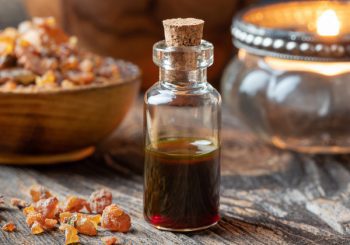By Sayer Ji
Contributing writer for Wake Up World
In the holiday season, there’s a lot of talk about the three wise men and the gifts they brought to the baby Jesus. In the Christmas Bible story, the three kings brought the Christ child gold, symbolizing his royalty, frankincense, symbolizing his divinity, and myrrh, foretelling his death.
[pro_ad_display_adzone id=”110028″]
Laboratory research now suggests that one of those gifts, myrrh, may have cholesterol lowering properties.
What exactly is myrrh?
Like frankincense, myrrh is a resin (dried sap) derived from trees growing in the Middle East, Somalia and Ethiopia. Also like frankincense, myrrh is used today for making incense. In natural healing, its oil is used to treat ulcers, sores and chapped skin.
In ancient Greece, myrrh was carried by soldiers into battle for its antiseptic and anti-inflammatory properties and to prevent the spread of gangrene. In ancient Rome it was used as incense at funerals and as an embalming ointment.
In a study published in the International Journal of Food Safety, Nutrition and Public Health, rats with high cholesterol were fed a blend of herbs including myrrh and saw their LDL (low density lipoproteins), VLDL (very low density lipoproteins) and triglycerides reduced. However, the “good” HDL (high density lipoproteins) cholesterol was also reduced.
The idea that there are “bad” and “good” blood fats that contribute to heart disease is known as the “lipid hypothesis,” or “cholesterol myth.” The hypothesis is subject to much criticism and has been challenged often. The underlying causes of cardiovascular disease are more likely related to repeated injurious events to the lining of the arteries provoked by diet, lifestyle and environmental exposures, subsequent inflammation, and a multitude of other factors.
Health Benefits of Myrrh
But myrrh also has other proven benefits, including:
- protecting against oxidative stress and the effects of lead toxicity
- antiparasitic activity
- anaesthetic, antibacterial and antifungal properties
- treating antibiotic resistant Trichomonias associated vaginal infections
- protecting against experimentally induced memory impairments
- possessing anti-arthritic activity
Do you want to get some myrrh into your diet this holiday season?
Happily, myrrh is an ingredient in the cult drink Fernet-Branca for anyone brave enough to try this bitter Italian digestive liquor. “Myrrh” comes from a Hebrew word meaning “bitter,” and is one of the main ingredients in this aromatic after dinner drink made from 40 herbs and spices, and having an alcohol content of 40%.
The taste takes some getting used to as the flavor has been described as a cross between medicinal crushed plants and “bitter mud.”
Originally produced in 1845 for its medicinal qualities, “Fernet,” as it is fondly called by those in the know, is claimed to cure hangovers, headaches and stomach upset. That makes it a must-have for those inevitable holiday excesses.
Recommended Articles by Sayer Ji:
- The Power and Mystery of Melanin Explained
- Cell Phone Induced Bodily Harm: How the Bees Can Help
- The Spice That Prevents Fluoride Destroying Your Brain
- How to Clean Your Arteries with One Simple Fruit
- 7 Healing Uses for Lavender Essential Oil
- From Table to Tomb: Cumin’s Health Benefits Rediscovered
- Why You Should Ditch Sugar in Favour of Honey
- The Love Affair Between Saffron and Humanity: As Ancient as Time Itself
- Why Walnut Resembles the Brain It Nourishes
- Magnesium Puts Psychiatric Drugs to Shame for Depression
About the author:
Sayer Ji is the founder of Greenmedinfo.com, a reviewer at the International Journal of Human Nutrition and Functional Medicine, Co-founder and CEO of Systome Biomed, Vice Chairman of the Board of the National Health Federation, and Steering Committee Member of the Global Non-GMO Foundation.
© 2020 GreenMedInfo LLC. This work is reproduced and distributed with the permission of GreenMedInfo LLC. Want to learn more from GreenMedInfo? Sign up for their newsletter here.
[pro_ad_display_adzone id=”110027″]








